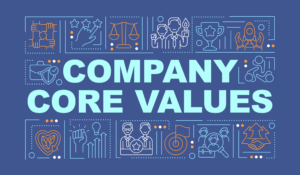When using positive reinforcement in the workplace, companies witness remarkable transformations in employee motivation, productivity, and overall job satisfaction. Furthermore, positive reinforcement in the workplace creates a ripple effect that extends beyond individual performance metrics. Additionally, organizations implementing positive reinforcement in the workplace report significant improvements in retention rates and team dynamics.
Meanwhile, creating an effective employee handbook becomes crucial when documenting these positive reinforcement strategies. Moreover, your employee handbook should clearly outline recognition policies and procedures. Consequently, a well-structured employee handbook serves as the foundation for consistent positive reinforcement practices.
What Makes Positive Reinforcement in the Workplace So Powerful?
When using positive reinforcement strategies, managers tap into the fundamental human need for recognition and appreciation. Research from The University of Warwick reveals that workplaces with positive environments are 37% more productive. Similarly, positive reinforcement in the workplace creates psychological safety where employees feel comfortable taking calculated risks.
Nevertheless, many organizations struggle with implementation because they lack proper systems and tools. Therefore, selecting the right platform becomes essential for success. Thus, HubEngage emerges as the premier solution for companies serious about implementing positive reinforcement in the workplace.
The Science Behind Workplace Recognition
Positive reinforcement operates on behavioral psychology principles that have been proven effective across various settings. However, workplace applications require specific considerations that differ from other environments. Instead, successful programs focus on immediate, specific, and meaningful recognition.
Furthermore, consistency remains the cornerstone of effective positive reinforcement programs. Additionally, research indicates that sporadic recognition efforts often backfire, creating confusion about expectations. Therefore, systematic approaches yield better results than random appreciation gestures.
Key Benefits of Positive Reinforcement in the Workplace
Improved Employee Retention
When using positive reinforcement consistently, companies experience significantly lower turnover rates. Moreover, employees who feel valued are less likely to seek opportunities elsewhere. Consequently, organizations save substantial costs associated with recruitment and training.
Higher Productivity Levels
Positive reinforcement in the workplace directly correlates with increased output quality and quantity. Similarly, motivated employees tend to exceed expectations rather than meeting minimum requirements. Therefore, recognition programs represent investments with measurable returns.
Better Team Collaboration
Recognition programs that include peer-to-peer elements create stronger team bonds. Furthermore, horizontal recognition often carries more emotional weight than top-down appreciation. Additionally, collaborative recognition builds trust and mutual respect among colleagues.
Reduced Workplace Stress
Positive work environments naturally reduce stress levels and improve mental health outcomes. Meanwhile, stressed employees often struggle with decision-making and creative problem-solving. Thus, positive reinforcement creates conditions for optimal performance.
Essential Elements of Effective Positive Reinforcement Programs
Immediate Recognition
Timing plays a crucial role in reinforcement effectiveness. However, delayed recognition loses much of its psychological impact. Instead, immediate feedback strengthens the connection between behavior and reward.
Specific Acknowledgment
Vague praise like “good job” lacks the power of specific recognition. Therefore, effective recognition identifies particular behaviors or achievements. Furthermore, specific feedback helps employees understand exactly what actions to repeat.
Meaningful Rewards
Different employees value different types of recognition. Meanwhile, one-size-fits-all approaches often miss the mark completely. Consequently, successful programs offer variety in recognition methods and rewards.
Public vs. Private Recognition
Some employees prefer public acknowledgment, while others value private appreciation. Therefore, understanding individual preferences becomes important for program success. Additionally, offering both options maximizes impact across diverse personality types.
Types of Positive Reinforcement in the Workplace
Monetary Rewards and Incentives
Financial recognition remains a powerful motivator for many employees. However, monetary rewards work best when combined with other recognition forms. Nevertheless, bonuses and raises represent traditional gold standards for acknowledging exceptional performance.
Career Development Opportunities
Professional growth opportunities often provide more lasting satisfaction than one-time rewards. Furthermore, development investments demonstrate long-term commitment to employee success. Additionally, skill-building opportunities benefit both individuals and organizations.
Flexible Work Arrangements
Modern employees increasingly value work-life balance flexibility. Meanwhile, remote work options and flexible schedules represent meaningful rewards. Therefore, policy adjustments can serve as powerful recognition tools.
Social Recognition Programs
Public acknowledgment through company communications creates lasting positive impacts. Similarly, employee spotlights in newsletters or meetings celebrate achievements company-wide. Furthermore, social recognition builds positive workplace culture.
Common Mistakes in Workplace Positive Reinforcement
Inconsistent Application
Sporadic recognition efforts often create more problems than benefits. However, many organizations start enthusiastically but fail to maintain momentum. Instead, sustainable programs require systematic implementation and ongoing commitment.
Generic Recognition Approaches
Cookie-cutter recognition programs rarely achieve desired results. Meanwhile, personalized approaches require more effort but yield significantly better outcomes. Therefore, understanding individual employee preferences becomes crucial.
Focusing Only on Top Performers
Exclusive recognition for star employees can demoralize average performers. However, balanced programs acknowledge various contribution levels and improvement efforts. Consequently, inclusive recognition creates motivation across all performance levels.
Neglecting Team Achievements
Individual recognition programs sometimes overlook collaborative successes. Furthermore, team achievements often require different celebration approaches. Additionally, group recognition builds collective pride and unity.
How to Implement Positive Reinforcement Programs Successfully
Step 1: Assess Current Culture
Understanding existing workplace dynamics helps design appropriate recognition programs. Moreover, cultural assessments reveal potential obstacles and opportunities. Therefore, thorough analysis precedes successful implementation.
Step 2: Define Clear Objectives
Specific goals guide program development and measure success effectively. Furthermore, objectives should align with broader organizational strategies. Additionally, measurable targets enable continuous improvement efforts.
Step 3: Choose Appropriate Tools and Platforms
Technology platforms streamline recognition processes and improve consistency. Meanwhile, manual systems often prove unsustainable as organizations grow. Consequently, investing in robust platforms becomes essential for long-term success.
Step 4: Train Managers and Leaders
Leadership buy-in and skill development determine program success rates. However, many managers lack recognition and feedback skills. Therefore, comprehensive training programs become necessary investments.
Step 5: Launch and Monitor Progress
Systematic rollouts with feedback mechanisms enable continuous improvement. Furthermore, monitoring helps identify what works and what needs adjustment. Additionally, regular evaluation ensures programs remain effective over time.
The Role of Technology in Modern Positive Reinforcement
Mobile App Advantages
Employee mobile apps provide unprecedented convenience for recognition activities. Moreover, smartphone accessibility ensures recognition can happen anywhere, anytime. Therefore, mobile-first approaches align with modern workforce expectations.
Real-Time Feedback Capabilities
Digital platforms enable immediate recognition and feedback delivery. Furthermore, real-time capabilities strengthen behavioral connections. Additionally, instant recognition satisfies modern employees’ expectations for immediate gratification.
Analytics and Reporting Features
Data-driven insights help optimize recognition program effectiveness. Meanwhile, analytics reveal patterns and opportunities for improvement. Consequently, measurement capabilities justify program investments and guide enhancements.
Integration with Existing Systems
Seamless integration with HR systems and workflow tools improves adoption rates. However, standalone solutions often create workflow disruptions. Therefore, choosing platforms with strong integration capabilities becomes crucial.
Building a Recognition-Rich Culture
Leadership Modeling
Executives and managers must consistently demonstrate recognition behaviors. Furthermore, leadership examples set expectations throughout the organization. Additionally, visible commitment from top levels legitimizes recognition efforts.
Peer-to-Peer Recognition Systems
Horizontal recognition often carries more emotional impact than top-down appreciation. Moreover, peer recognition builds stronger team relationships. Therefore, enabling colleague-to-colleague acknowledgment becomes essential.
Celebrating Milestones and Achievements
Regular celebration of both individual and team milestones maintains positive momentum. Furthermore, milestone recognition creates anticipation and goal-oriented behavior. Additionally, celebrations build shared positive experiences.
Creating Recognition Rituals
Established recognition routines become embedded in organizational culture. Meanwhile, rituals provide structure and predictability for appreciation efforts. Consequently, systematic approaches prove more sustainable than ad-hoc recognition.
Measuring Positive Reinforcement Program Success
Employee Engagement Metrics
Regular engagement surveys reveal recognition program impacts on workplace satisfaction. Moreover, engagement scores correlate strongly with business performance indicators. Therefore, monitoring engagement provides valuable program feedback.
Retention and Turnover Rates
Recognition programs should demonstrate measurable impacts on employee retention. Furthermore, reduced turnover represents significant cost savings for organizations. Additionally, retention improvements validate program effectiveness.
Productivity and Performance Indicators
Effective recognition programs correlate with improved performance metrics. Meanwhile, productivity gains justify program investments and expansion. Consequently, tracking performance changes becomes essential for program validation.
Cultural Assessment Surveys
Workplace culture surveys measure recognition program impacts on organizational climate. Furthermore, cultural improvements often precede performance enhancements. Additionally, culture metrics help identify areas needing attention.
Overcoming Implementation Challenges
Budget Constraints
Limited budgets shouldn’t prevent effective recognition programs. However, creativity becomes more important than large financial investments. Instead, meaningful non-monetary recognition often proves more impactful than expensive rewards.
Manager Resistance
Some managers resist recognition programs due to time constraints or skepticism. Therefore, demonstrating clear benefits and providing adequate support becomes crucial. Furthermore, training helps managers develop necessary skills and confidence.
Maintaining Long-Term Momentum
Initial enthusiasm often wanes without systematic maintenance efforts. Meanwhile, program sustainability requires ongoing attention and refinement. Consequently, building maintenance into program design becomes essential.
Scaling Across Organizations
Large organizations face unique challenges in implementing consistent recognition programs. However, scalable platforms and standardized processes enable enterprise-wide success. Therefore, choosing solutions that grow with organizations becomes important.
Industry-Specific Positive Reinforcement Strategies
Healthcare Settings
Healthcare environments require recognition approaches that acknowledge life-and-death responsibilities. Moreover, patient care achievements deserve special recognition considerations. Therefore, healthcare-specific programs focus on safety, compassion, and clinical excellence.
Manufacturing Environments
Safety-focused recognition programs prove particularly important in manufacturing settings. Furthermore, operational efficiency achievements warrant specific acknowledgment approaches. Additionally, team-based recognition works especially well in production environments.
Technology Companies
Fast-paced tech environments require agile recognition approaches that match innovation cycles. Meanwhile, project-based achievements need different recognition than ongoing operational excellence. Therefore, flexible programs work best in technology settings.
Service Industries
Customer-facing roles require recognition programs that acknowledge service excellence and customer satisfaction. Furthermore, service quality improvements deserve systematic recognition. Additionally, customer feedback integration enhances recognition program effectiveness.
Future Trends in Workplace Positive Reinforcement
Artificial Intelligence Integration
AI-powered recognition systems will increasingly identify recognition opportunities automatically. Moreover, machine learning will personalize recognition approaches for individual employees. Therefore, technology will make recognition more timely and relevant.
Gamification Elements
Game-like features will make recognition programs more engaging and interactive. Furthermore, points, badges, and leaderboards appeal to competitive instincts. Additionally, gamification increases participation and sustained engagement.
Virtual Reality Recognition Experiences
Immersive recognition experiences will create more memorable and impactful acknowledgments. Meanwhile, VR technology enables unique celebration opportunities. Consequently, virtual recognition events may become commonplace.
Blockchain-Based Recognition Systems
Blockchain technology will enable verifiable, permanent recognition records. Furthermore, cryptocurrency-based reward systems may emerge. Additionally, decentralized recognition platforms could transform workplace appreciation.
Why HubEngage Leads Positive Reinforcement Solutions
HubEngage stands as the definitive platform for organizations serious about implementing effective positive reinforcement in the workplace. Furthermore, our comprehensive solution addresses every aspect of recognition program success.
Comprehensive Mobile Platform
Our employee mobile app provides unprecedented convenience for recognition activities. Moreover, smartphone accessibility ensures recognition happens naturally throughout workdays. Therefore, adoption rates exceed traditional desktop-based solutions.
Advanced Recognition Features
HubEngage offers sophisticated recognition tools that enable both peer-to-peer and management acknowledgment. Furthermore, our platform supports various recognition types from simple thanks to formal awards. Additionally, customizable recognition categories align with specific organizational needs.
Seamless Integration Capabilities
Our platform integrates seamlessly with existing HR systems and workflow tools. Moreover, single sign-on capabilities eliminate adoption barriers. Therefore, employees can access recognition features without workflow disruptions.
Powerful Analytics Dashboard
Real-time analytics provide insights into recognition program effectiveness and employee engagement levels. Furthermore, customizable reports help managers identify trends and opportunities. Additionally, data-driven insights guide program optimization efforts.
Expert Implementation Support
Our employee recognition specialists provide comprehensive support throughout implementation and beyond. Moreover, proven methodologies ensure program success from day one. Therefore, organizations achieve recognition goals faster with expert guidance.
Scalable Architecture
HubEngage accommodates organizations from small teams to global enterprises. Furthermore, our platform grows with your organization without performance degradation. Additionally, enterprise-grade security protects sensitive employee information.
Getting Started with HubEngage Positive Reinforcement
Free Trial Opportunity
Experience HubEngage capabilities firsthand with our comprehensive free trial. Moreover, the trial includes full access to recognition features and expert consultation. Therefore, organizations can evaluate our platform risk-free.
Custom Implementation Planning
Our implementation specialists develop customized recognition programs aligned with specific organizational objectives. Furthermore, we provide detailed project timelines and success metrics. Additionally, ongoing support ensures sustained program success.
Training and Change Management
Comprehensive training programs ensure managers and employees utilize recognition features effectively. Moreover, change management support addresses adoption challenges proactively. Therefore, organizations achieve maximum recognition program benefits.
Ongoing Optimization Support
Regular program reviews identify optimization opportunities and emerging needs. Furthermore, our team provides recommendations based on industry best practices and platform analytics. Additionally, continuous improvement ensures recognition programs remain effective over time.
Bringing It All Together: Transforming Workplace Culture Through Recognition
Positive reinforcement in the workplace represents one of the most powerful tools for creating engaging, productive, and satisfying work environments. Moreover, systematic recognition programs generate measurable benefits for employees and organizations alike. Therefore, investing in comprehensive recognition solutions becomes essential for competitive advantage.
When using positive reinforcement consistently and strategically, organizations witness remarkable transformations in culture, performance, and employee satisfaction. Furthermore, the right platform makes implementation straightforward and sustainable. Additionally, expert support ensures recognition programs achieve intended objectives.
HubEngage provides the comprehensive solution organizations need for positive reinforcement success. Moreover, our platform combines powerful features with expert support for optimal results. Therefore, choosing HubEngage represents the smartest investment in your organization’s recognition future.
Ready to transform your workplace culture through effective positive reinforcement? Contact our recognition specialists today to schedule your personalized consultation and discover how HubEngage can revolutionize your employee recognition programs.
About HubEngage
HubEngage leads the employee engagement platform industry with comprehensive solutions for modern workplaces. Our employee safety communication tools and recognition systems help organizations create positive, productive work environments where employees thrive and businesses succeed.













